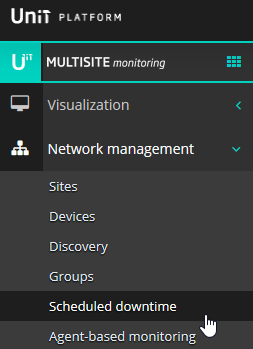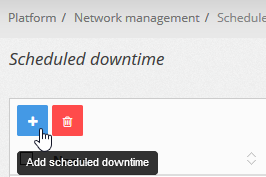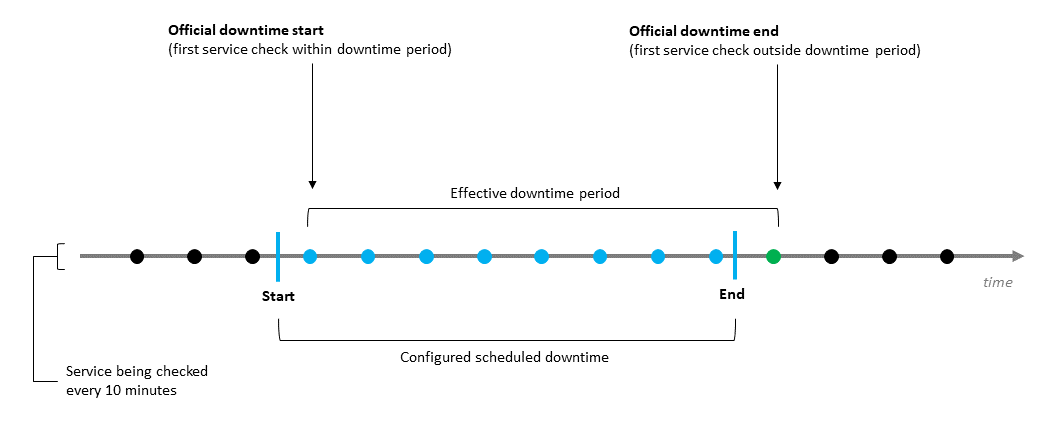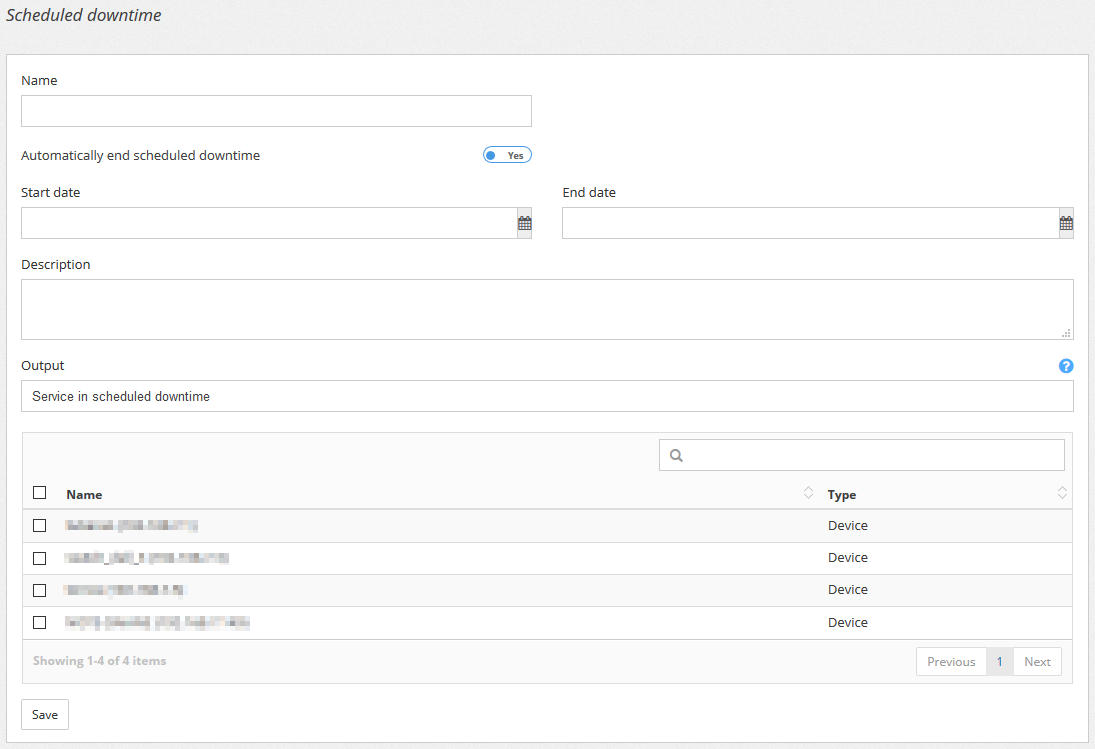A scheduled downtime is a predefined period of time generally used to perform software and/or hardware maintenance and should not be recorded as service unavailability.
Creating a scheduled downtime
Using Unit Platform, you can create a scheduled downtime for devices and groups of devices. To create one, go to Multisite Monitoring > Network Management > Scheduled Downtime:

Scheduled Downtime menu entry
Click the add button:

Add scheduled downtime
When defining a scheduled downtime, the following settings are available:
- Name: field used to identify the scheduled downtime in the records list;
- Start date: defines when the schedule will go into effect;
- End date: defines when a scheduled downtime will be automatically ended. If the option “Automatically end scheduled downtime” is deactivated, the user must end the downtime manually afterwards;
- Description: this field can be used to describe the procedures that will be executed during the downtime;
- Output: this field is used to show a customized message in the status of a service during a downtime.
Once you have configured these options, select which devices will be part of the downtime and click Save.
What happens when a scheduled downtime goes into effect?
Every service that belongs to a device in a scheduled downtime will change status to SCHEDULED DOWNTIME as its checks are performed during the downtime period.
Consider in the image below that each point represents a check of a particular service in the timeline:

The period defined by the “Start” and “End” delimiters is the period configured when scheduling a downtime.
The effective downtime period is started as soon as the system performs a service check for the first time during the scheduled period. At this point, the system will detect the service is within a scheduled downtime and the service status will be changed.
Following the same logic, the first check executed after the scheduled end date will determine the effective downtime end and the service should go back to its normal monitoring routine.
Note: pay attention to the service check intervals. If a scheduled downtime is short and the interval between service checks is too long, the services might not enter the scheduled downtime state. This happens because there aren’t any service checks being executed during the scheduled downtime.
Changing the schedule
The system allows any setting to be changed in a scheduled downtime as long as the downtime hasn’t already ended.
Ending a scheduled downtime
In two occasions a scheduled downtime may be ended/removed:
- If the downtime hasn’t gone into effect yet, the system allows the schedule to be removed.
- If the downtime is in progress, it can be ended manually, or you can wait for the the system to automatically end it at the previously specified date.
After a scheduled downtime is ended, the record will be kept in the system for historical purposes and can’t be deleted.
Device availability during downtime
The periods when a service is in SCHEDULED DOWNTIME status won’t affect negatively the availability indicators.
Notifications
Alerts can be configured normally by enabling a notification action for the status SCHEDULED DOWNTIME. Notifications can be sent by e-mail or Telegram.
